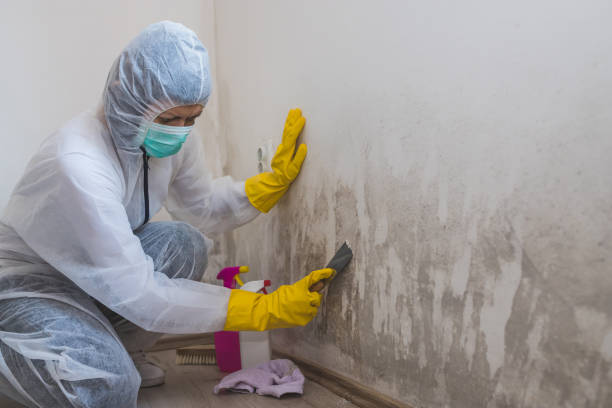Mold can grow in a wide variety of places but it often grows in damp and humid areas like bathrooms and basements. Those places are especially susceptible to mold if they have a leaky roof or if there is excessive condensation on the walls. It's important to deal with mold quickly before it spreads, so read on for tips on how to get rid of mold.

Why does Mold Grow on the Drywall?
Mold loves damp, warm, and humid environments. Drywall provides the perfect environment for mold to grow and thrive. The paper on drywall is a food source for mold, and the gypsum in the drywall provides the moisture mold needs to grow.
Drywall is often used in homes and buildings because it is cheap and easy to install. However, drywall is also one of the most common places for mold to grow.
If you have mold growing on your drywall, it is important to remove it as soon as possible. Mold can cause serious health problems, including respiratory problems, headaches, and skin irritation.
What are the Warning Signs of Mold Growth?
Mold can cause a variety of health problems, so it's important to be aware of the potential warning signs of mold growth. Some common warning signs include:
-A musty or earthy smell in your home
-Visible mold growth on walls, ceilings, or other surfaces
-Discoloration or staining of walls, ceilings, or other surfaces
-Peeling paint or wallpaper
-Excessive condensation on windows or other surfaces
-Water leaks or flooding in your home
If you notice any of these warning signs, it's important to take action immediately. Mold can spread quickly, so it's important to address the problem as soon as possible.
How Do You Remove Mold from Drywall?
There are a few different ways that you can remove mold from drywall. You can use a chemical cleaner, sand the area, or scrape the mold off with a putty knife.
If you choose to use a chemical cleaner, make sure that you read the label and follow the directions carefully. You will also want to wear gloves and a mask to protect yourself from the fumes.
If you decide to sand the area, be sure to vacuum up any dust afterward so that it doesn’t spread around your home.
Scraping the mold off with a putty knife is another option, but it can be tedious and time-consuming. Whichever method you choose, be sure to take precautions to protect yourself from exposure to mold spores.
Conclusion:
When it comes to mold, it is important to take action quickly to prevent the spread of the spores. Mold can cause serious health problems, so it is not something to take lightly. If you suspect that there is mold in your home, it is best to call a professional to come and take a look. However, if you find mold on your drywall, there are some steps you can take to remove it yourself.
To remove mold from drywall, start by mixing one cup of bleach with one gallon of water. Next, use a sponge or brush to apply the bleach solution to the moldy area. Let the solution soak for about 15 minutes before scrubbing at the mold with a stiff brush. Once you have removed as much of the mold as possible, rinse the area with clean water and allow it to dry completely. You may need to repeat this process several times to completely remove all of the mold spores.
If you have a large amount of mold on your drywall, or if the mold has begun to spread throughout your home, it is best to call a professional for help. Mold can be tricky to remove, and it can cause serious health problems if not dealt with properly.

No comments yet